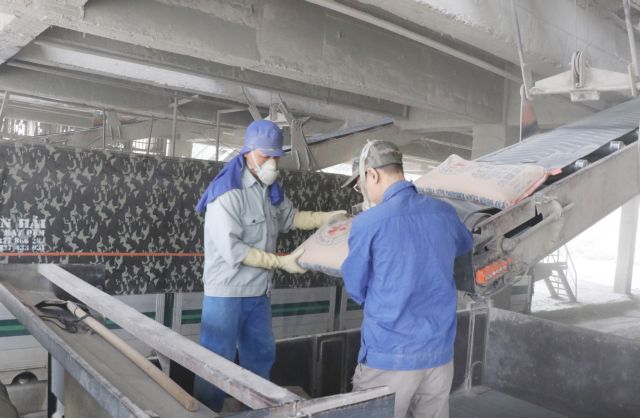 Economy
Economy


|
| Cement production at La Hiên Cement Joint Stock Company. Cement industry is seeing signs of recovery this year after two years of glut. — VNA/VNS Photo Hoàng Nguyên |
HÀ NỘI — The cement industry is showing signs of recovery this year after two years of oversupply and weak domestic demand, driven by accelerated public investment in infrastructure development and lower input costs.
According to the Ministry of Construction, the sector recorded strong growth in the first six months of the year, with output reaching 49.8 million tonnes, up 18 per cent, and sales rising 14 per cent to 54 million tonnes.
Domestic sales climbed 18 per cent to 37.5 million tonnes, highlighting a solid rebound in local demand. Exports in January–June rose 6 per cent to 17 million tonnes, led by a 19 per cent increase in clinker shipments, generating total revenue of US$635 million, up 1.7 per cent. Key markets included the Philippines, the US, Singapore and Malaysia.
Export prices, however, remain under pressure from fierce competition, forcing producers to maintain prices at late-2024 levels to secure orders. Cement and clinker inventories stood at around 4.5 million tonnes, equivalent to 20 days of production.
Falling input costs have improved margins, though high electricity prices continue to weigh on producers. Imported coal prices, a major input, dropped sharply to US$98.6 per tonne, 22.6 per cent lower than the same period last year. Meanwhile, average electricity prices increased by 4.8 per cent from May 10.
Several producers posted significant profit growth. VICEM Hà Tiên reported an after-tax profit of VNĐ112.3 billion, 2.45 times higher than last year, while VICEM Bỉm Sơn earned nearly VNĐ64.2 billion, up 150 per cent. VICEM Bút Sơn recorded a profit of VNĐ12.4 billion.
Public investment and a gradual recovery in construction are expected to remain the major growth drivers for the cement industry this year, said Nguyễn Văn Thắng, director of construction services company Gemtec.
Exports in the coming months will depend largely on demand from South Asia and Southeast Asia, as well as the impact of trade protectionism and transportation costs.
Industry expert Phạm Ngọc Trung noted that the sector should prioritise product restructuring and energy conversion. Reducing clinker proportions, producing more high-added-value cement products, and adopting alternative energy sources would significantly cut costs and create sustainable competitive advantages, he said.
FPT Securities forecast domestic cement demand to grow by 2.38 per cent annually during 2024–39, supported by positive housing construction prospects. However, export growth is unlikely to be as optimistic, with weak demand from China and rising protectionism weighing on the outlook.
Việt Nam currently operates about 90 cement production lines, with an annual capacity of 106 million tonnes. — VNS




